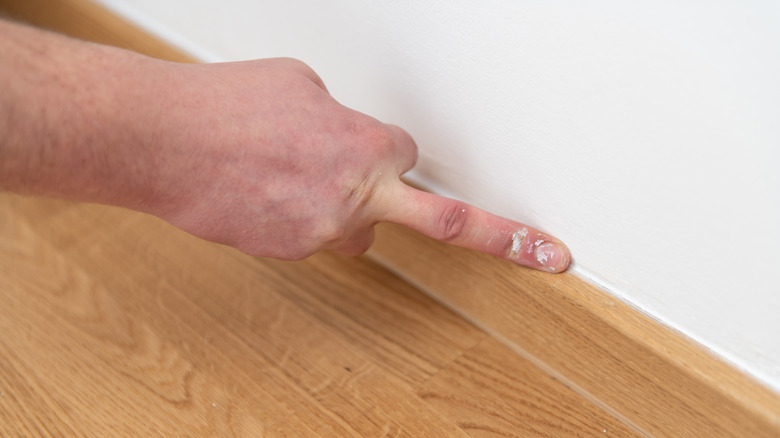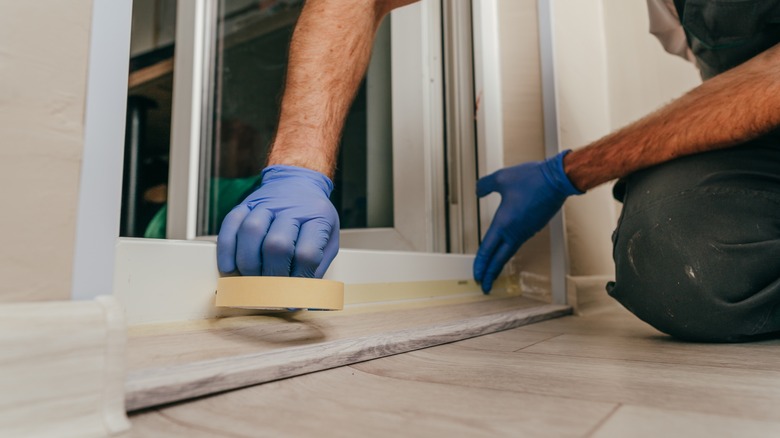Does This Soapy Hack Make For Seamless DIY Caulking? Here's What We Know
Homeowners often find themselves needing to caulk various areas in their houses for all sorts of reasons, from sealing gaps and cracks to waterproofing joints. But one universal experience is the struggle to get a professional-looking caulk job. This is where the hack of using soapy water to apply caulk neatly and evenly comes in. This trick involves dipping your finger or a caulking tool in soapy water before smoothing out the caulk, which helps to prevent the caulk from sticking to your skin or tool. The soap creates a slippery surface, making it easier to glide over the caulk and achieve a smooth, even finish.
However, some argue that this method might not be as foolproof as it seems. One potential drawback is the potential for adhesion compromise. Silicone caulk is known for its strong adhesive properties, which bind well to most surfaces, creating a watertight seal. Introducing soapy water into the mix can impair the adhesive quality of the silicone caulk. The soap forms a slippery layer, preventing the silicone from adhering correctly to the surface, potentially leading to weak spots in the seal.
Another concern is decreased durability. Using soapy water can reduce the lifespan of the seal, making it resistant to wear and tear, prone to early aging, and more likely to require frequent repairs or replacements. In short, while the soapy water hack might offer a quick and easy solution, it may not be the best choice for those seeking a long-lasting, durable seal.
What is the alternative to soapy water to smooth out caulk?
If you want to steer clear of soapy water to smooth out caulk, there's a great alternative that will help you achieve crispy-clean caulk lines. Painter's tape! This method involves applying painter's tape along both sides of the area you plan to caulk, creating a clean, straight edge. Once you've applied the caulk, you can still use a damp finger to smooth out the bead, but the tape on either side will ensure that you won't get any extra caulk where you don't want it to be. Timing is important when using painter's tape for caulking. You will want to remove the tape pretty quickly, because if you wait too long then the caulk can start to set and stick to the tape, causing it to pull and create jagged edges.
Using painter's tape might take a bit more time and effort compared to the soapy water hack, but the results are well worth it. You'll achieve straight, flawless lines and a professional-looking finish that will stand the test of time. Plus, you'll avoid the potential pitfalls of compromised adhesion and decreased durability, ensuring that your caulking job remains looking good and performing well for years to come.

